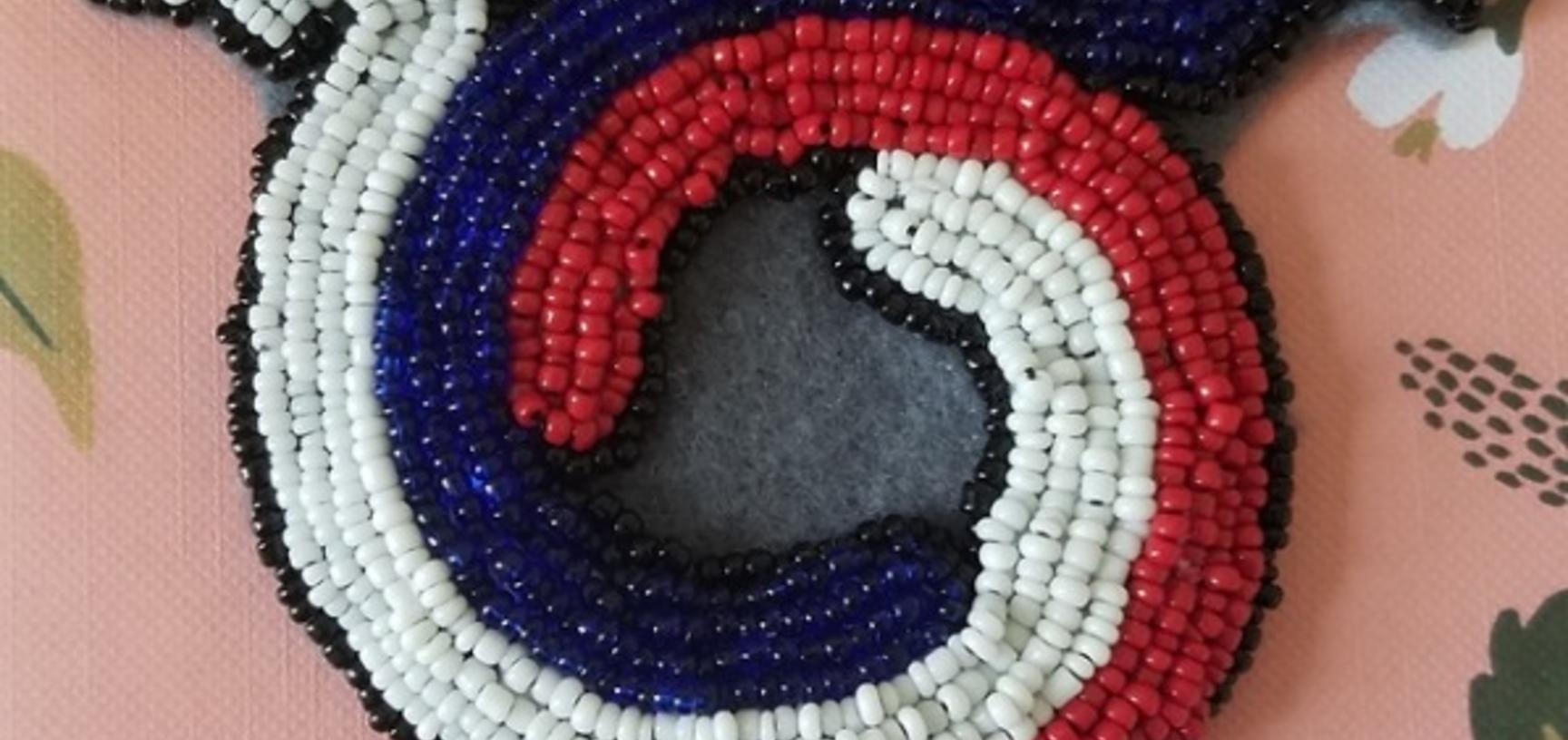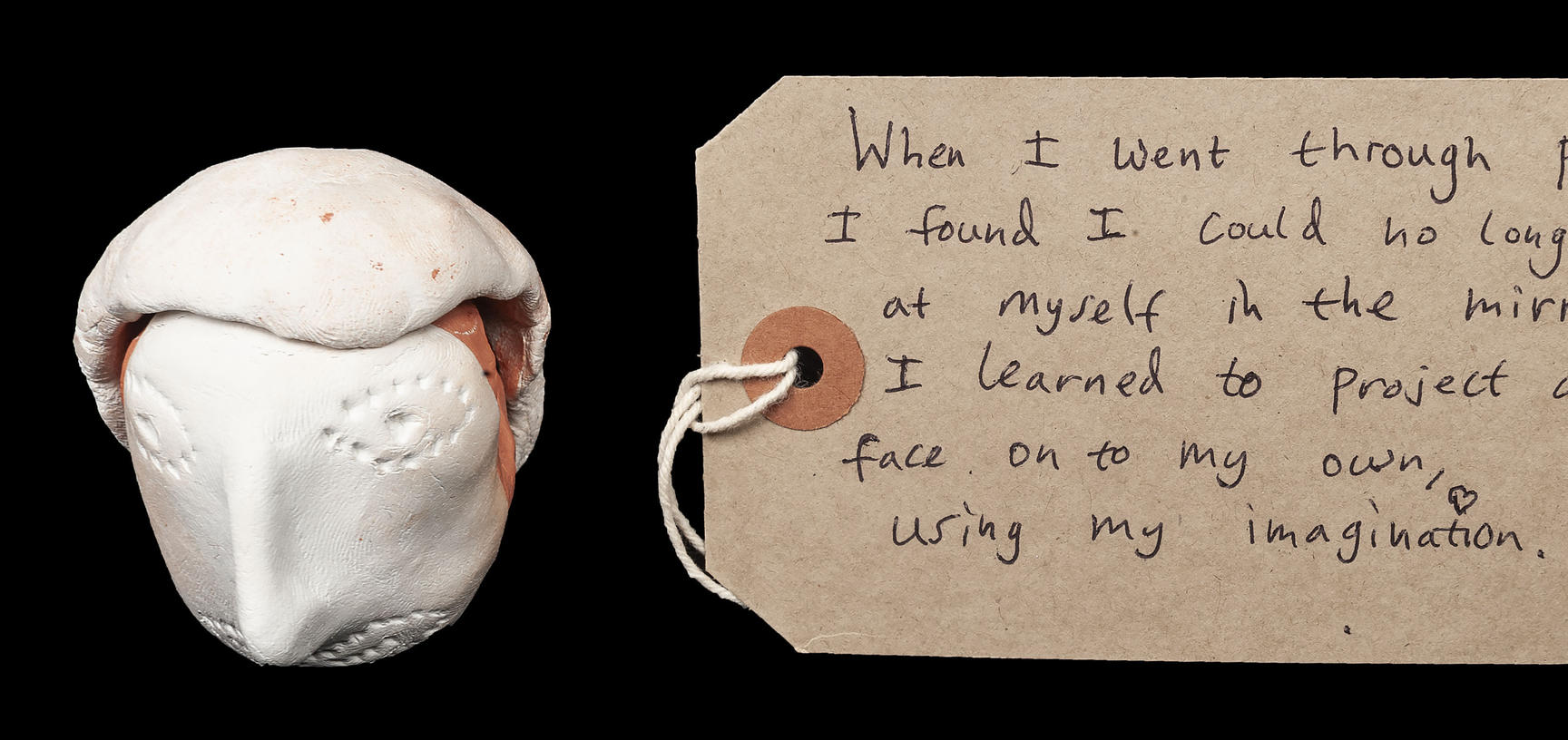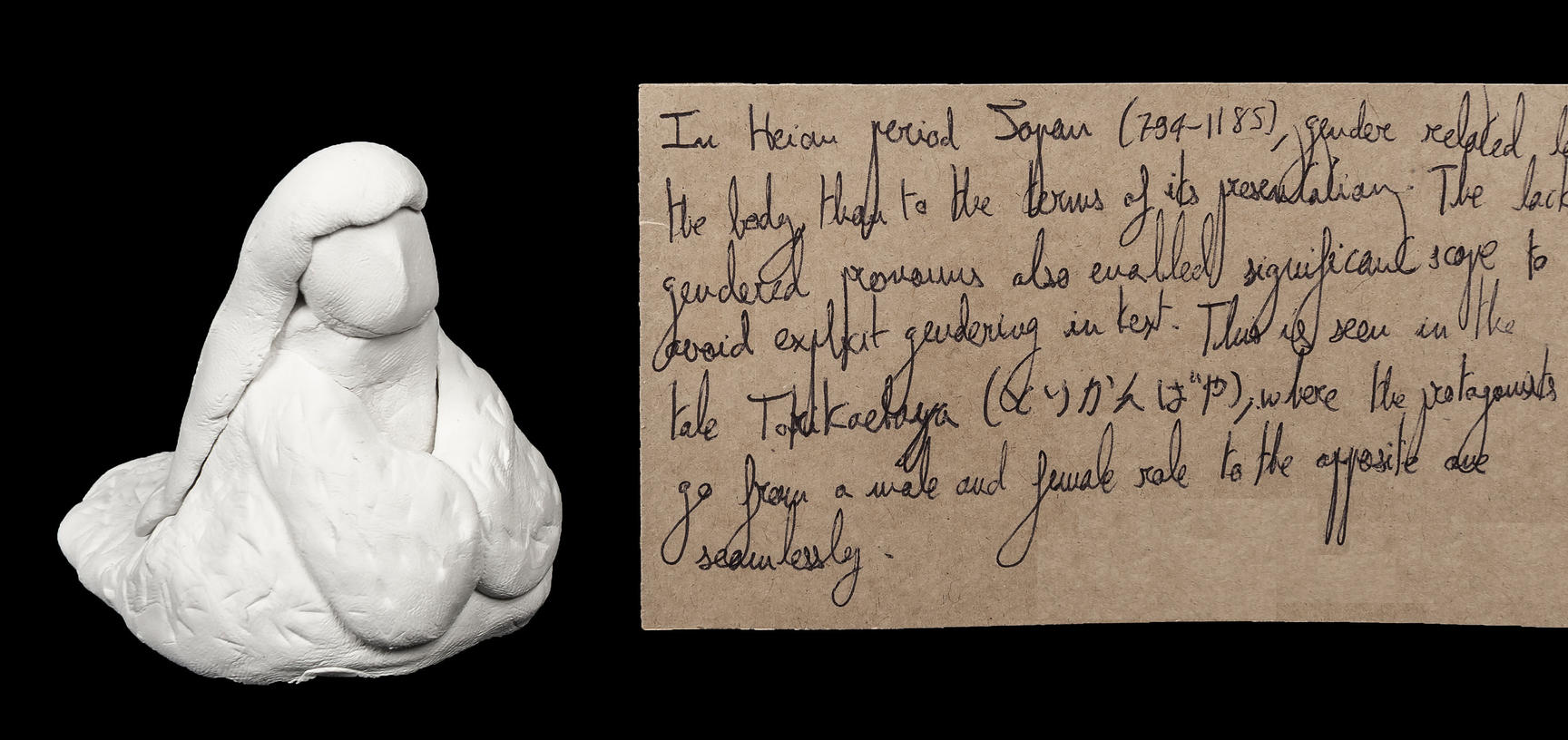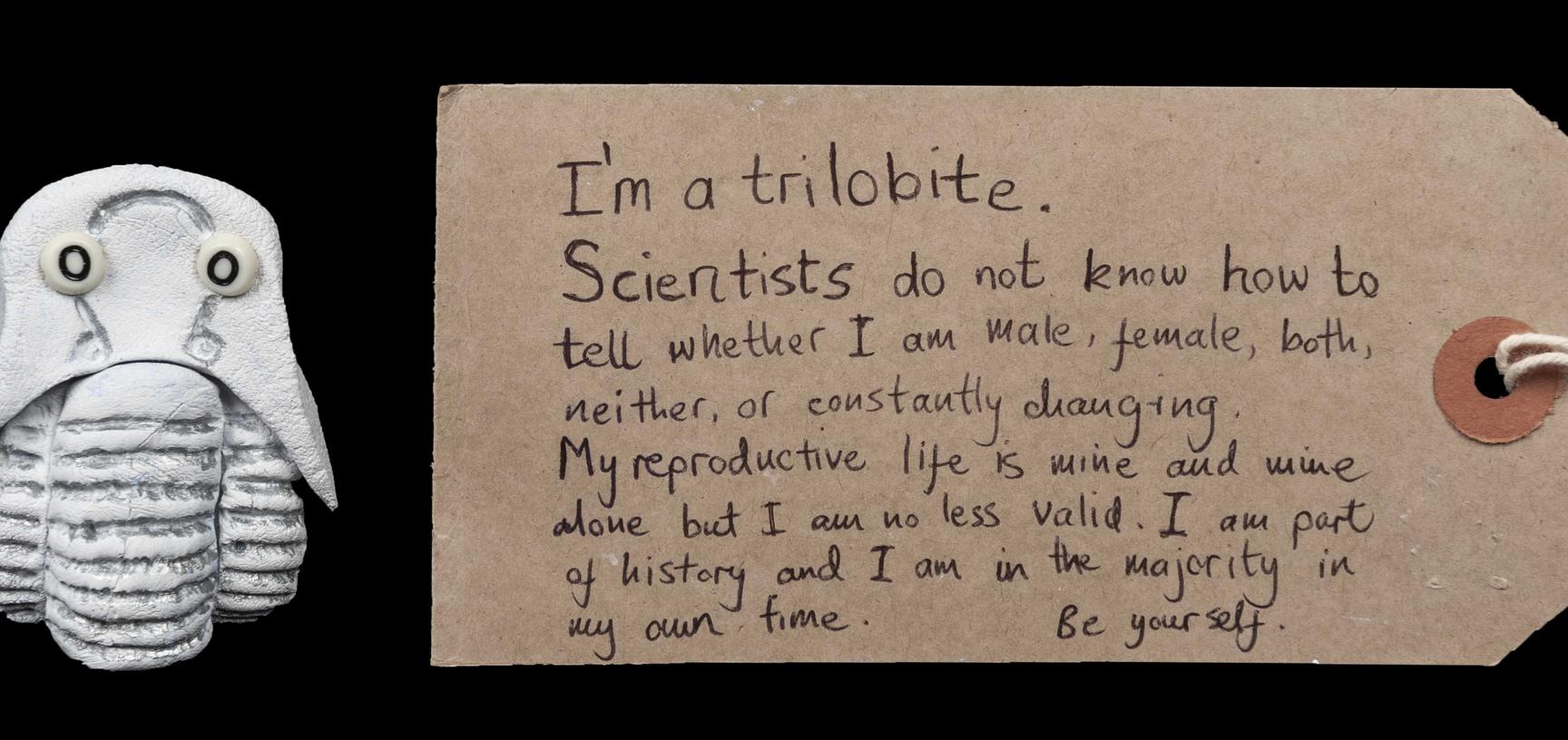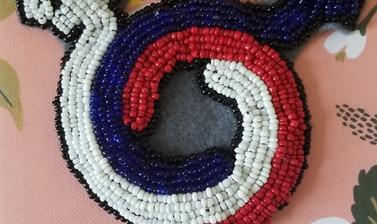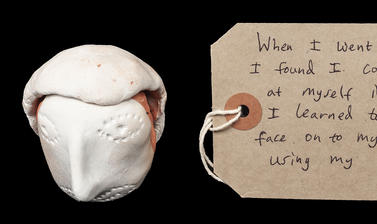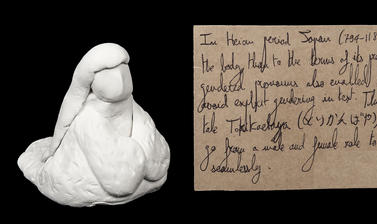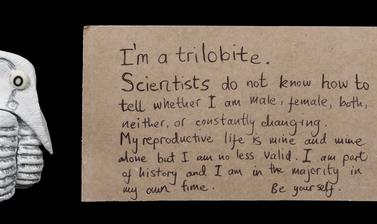beyond-the-binary/amulets
The Beyond the Binary exhibition brings together the diverse perspectives of LGBTQ+ researchers, artists and community activists to create space for self-representation in the museum.
Gemma Cantlow (Beyond the Binary community curator) has brought together stories people have shared about miniature objects, telling a personal or political story about their LGBTQ+ lived experiences, inspired by Stanhope Peep Pipes in the exhibition.
We also invite you to add to the conversation by taking a picture of a miniature object which reflects the themes of the exhibition or tells a personal story and adding it to the hashtag #PittBeyondBinary.
Story telling with minature objects
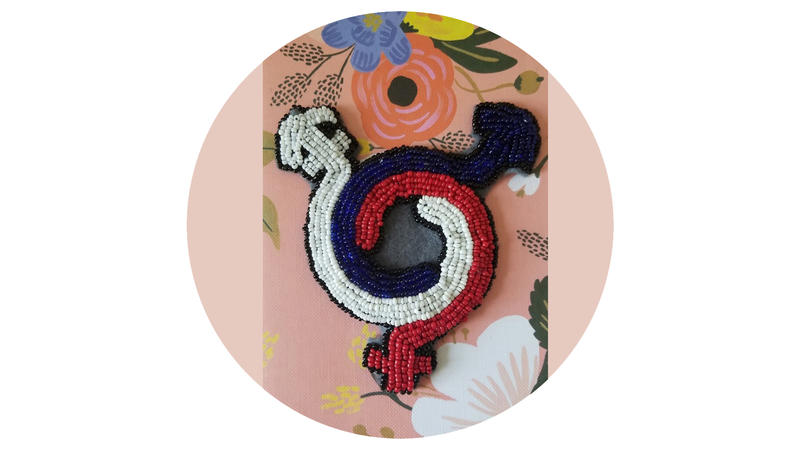
Beaded patch
This one-of-a-kind badge is immensely important to me for reasons as layered as the cloth, thread, and beads it is made from. Beadwork is significant to my identity as an Indigenous person, and my entire Métis Nation is historically known by other tribes as The Flower Beadwork People. I started beading my people's traditional floral designs since moving to Oxford for my MSt degree. As a transgender man prone to shyness and dysphoria, I did my best to be sociable. I made beaded patches for friends and colleagues to show my affection. But I am not the wonderful artist responsible for this beautiful patch. Emboldened with the transgender symbol, it is made from colourful beads, often seen on 1800s Plains clothing. My boyfriend made me this symbol of affirmation for my birthday this year. In recognition of my Métis heritage we bead together in our spare time. From the start he was extremely supportive of my gender identity, learning about transgender issues and sending me pictures of trans-positive street art in Oxford. Every time I look at this badge on my satchel, I’m reminded that even far from home I am connected to my culture and carry the kindness and wisdom of my ancestors, and support of my boyfriend.
Dan Laurin (Beyond the Binary community curator)
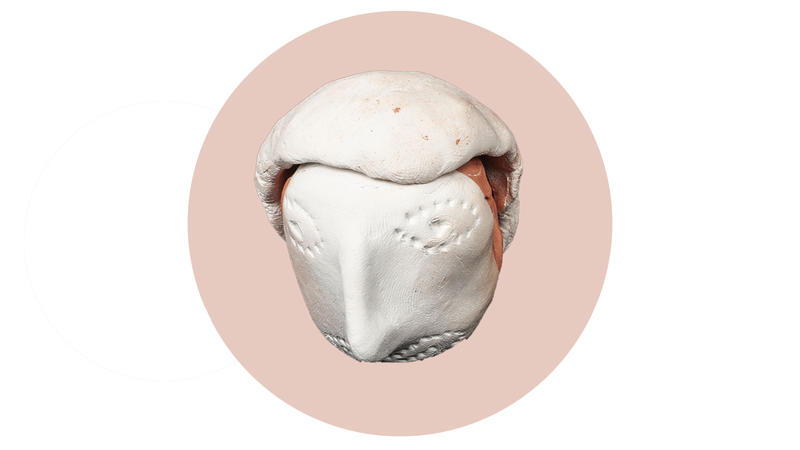
Clay sculpture of face
When I went through puberty, I found I could no longer look at myself in the mirror. Instead, I learned to project a different face on to my own, using my imagination.
Anonymous participant (Beyond the Binary clay amulets workshop)
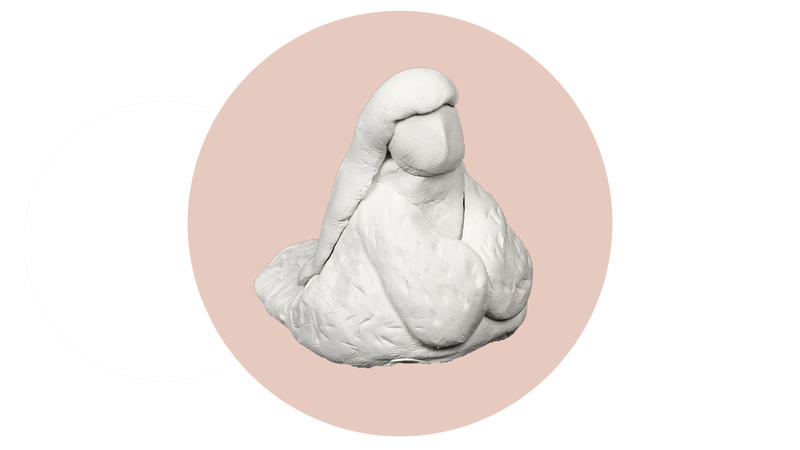
Clay miniature torso
In Heian period Japan (794 – 1185), gender related less to the body than to the terms of its practicality. The lack of gendered pronouns also enabled significant scope to avoid explicit gendering in text. This is seen in the tale Torikaebaya, where the protagonists go from a male and female role to the opposite one seamlessly.
Anonymous participant (Beyond the Binary clay amulets workshop)
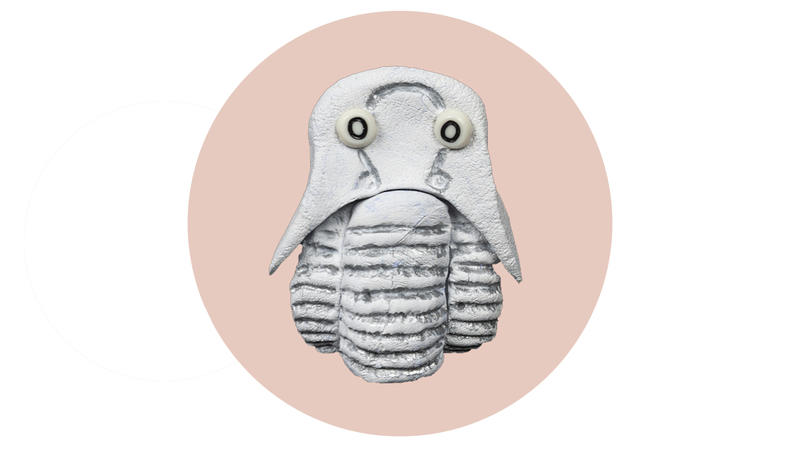
Clay trilobite figure
I’m a trilobite. Scientists do not know how to tell whether I am male, female, both, neither, or constantly changing. My reproductive life is mine and mine alone but I am no less valid. I am part of history and I am in the majority in my own time. Be yourself.
Anonymous participant (Beyond the Binary clay amulets workshop)
Thanks to the National Lottery Heritage Fund for their generous support





